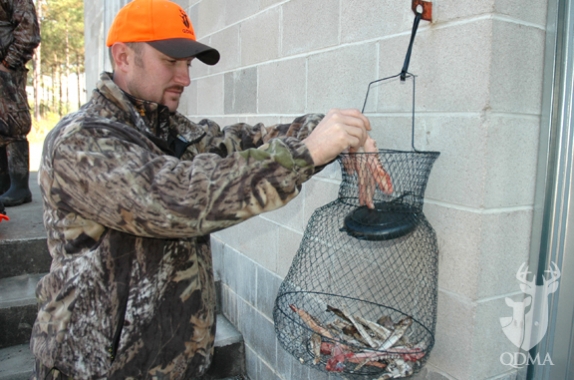Loading 250 pounds of free weights on a bar is not how you should start a weight-training program. Signing up for a 5K is not how you should prepare yourself to become a jogger. And looking for a 5½-year-old 10-pointer under your stand is not how you should launch a Quality Deer Management effort.
Whether you are new to QDM or you are a veteran who hopes to recruit neighbors to help you, it’s good to remember that QDM is like any other self-improvement effort: You’ve got to start small, pace yourself, and celebrate success in stages if you want to avoid disappointment.
Here’s a closer look at some of the ways you can pursue QDM gradually.
Buck Harvest. QDMA believes the starting point for all QDM programs is protecting yearling bucks, and you don’t even have to protect all of them in the local population to make a difference. If most of them survive to 2½, you will begin to improve buck age structure in coming years. Even if you decide to kill 2½-year-olds, you won’t likely kill them all, and some will trickle through to older age groups. So, if you’ve never killed a 2½-year-old buck, begin there. Work your way up to protecting older ages. This way, you continue to enjoy hunting success and have fun while you build buck age structure.
Aging Bucks on the Hoof. Expect to put in some practice at this before you become proficient.The art of estimating buck age is strongly tied to typical body size of deer where you hunt, so you’re going to have to lay your hands on some local bucks after you have estimated their age in a photo or in the field. Pull a jawbone or send an incisor tooth off to a lab for analysis so you can check your estimate and refine your skills for future opportunities. There will be mistakes. Learn from them, have fun anyway, and move on. This is hunting, not heart surgery.
Herd Monitoring. There’s a lot of deer data you can collect and a number of ways to collect it, from the easy to the complex. Begin with the simple, like recording what you see each time you hunt along with the number of hours you hunted. At the end of season, calculate your “bucks per hour” sighting rate, or “fawns per doe,” and track these indicators across seasons. Learn to remove, tag and save jawbones from the deer you harvest. As you begin to interpret the information you gather, you’ll want to learn more, and one day you might find yourself conducting trail-camera surveys. If you don’t, that’s okay too. QDM is not an all-or-nothing proposition – although the more you put into it, the more you get out.
Habitat. Food plots are great, but if you don’t have the space, budget, or time, no problem. Forage and cover can be improved in many ways, including easy, inexpensive and small-scale techniques, like taking a chainsaw and simply dropping select, low-value trees to admit sunlight and encourage the understory. Do what you can, when you can, and build on each small step.
Set small goals that can be reached quickly, and you’ll go a long way toward maintaining the fun in your hunting while you are improving it. Deer hunting becomes even more fun under QDM for a lot of reasons, like seeing more rubs and scrapes, having more success with rattling and grunt calls, and witnessing more bucks chasing does. But getting there should be fun, too.
